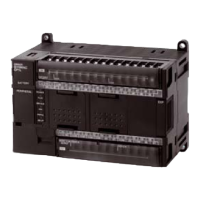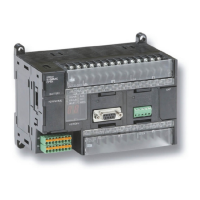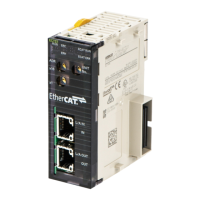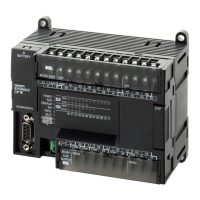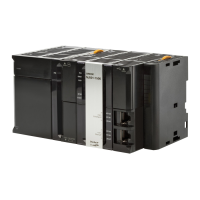83
CPU Units Section 3-1
3-1-7 Peripheral Port
The peripheral port is mainly used for connecting Programming Devices, such
as Programming Consoles and personal computers running Support Soft-
ware. Programming Consoles can be connected only to this port. Host Link
and no-protocol communications are also supported for this port.
Note 1. When connecting a Programming Console to the peripheral port, turn OFF
pin 7 on the DIP switch on the front of the CPU Unit.
2. When connecting a device to the peripheral port other than a Programming
Console, such as a personal computer running Support Software, be sure
to turn ON pin 7 on the DIP switch on the front of the CPU Unit. When con-
necting to a peripheral bus, it is also necessary to set the communications
mode in the PC Setup to Host Link mode.
Opening the Peripheral
Port Cover
Insert your fingertip or a small screwdriver in the gap on the right of the cover
and pull to the left to open, as shown on the left in the following illustration.
3-1-8 Built-in RS-232C Port
The RS-232C port built into the CPU Unit is mainly used for connecting
devices other than Programming Devices. It is not possible to perform com-
munications with a Programming Console or any other Programming Device
via a peripheral bus using this port. The following communications modes are
supported: Host Link, no-protocol, 1:1 Data Link, and 1:1-mode NT link.
Connector Pin Assignments
Pin assignments for the RS-232C port are given in the following table.
C-series PC in 1:1 Data Link Mode No Yes
PT in 1:1 NT Link Mode No Yes
Device and mode Peripheral port Built-in
RS-232C port
Peripheral port
Pin Abbreviation Name Direction
1 FG Field ground ---
2 SD (TXD) Send data Output
3 RD (RXD) Receive data Input
4 RS (RTS) Request to send Output
5 CS (CTS) Clear to send Input
6 +5V (see note) Power supply ---
7 --- Not used. ---
8 --- Not used. ---
5
1
9
6
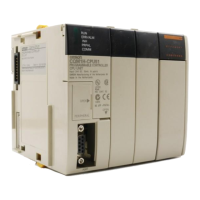
